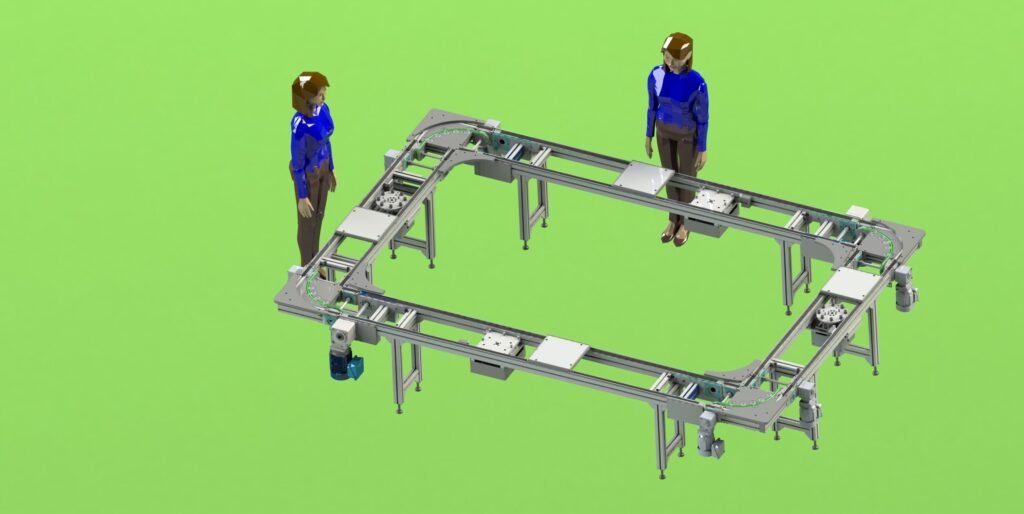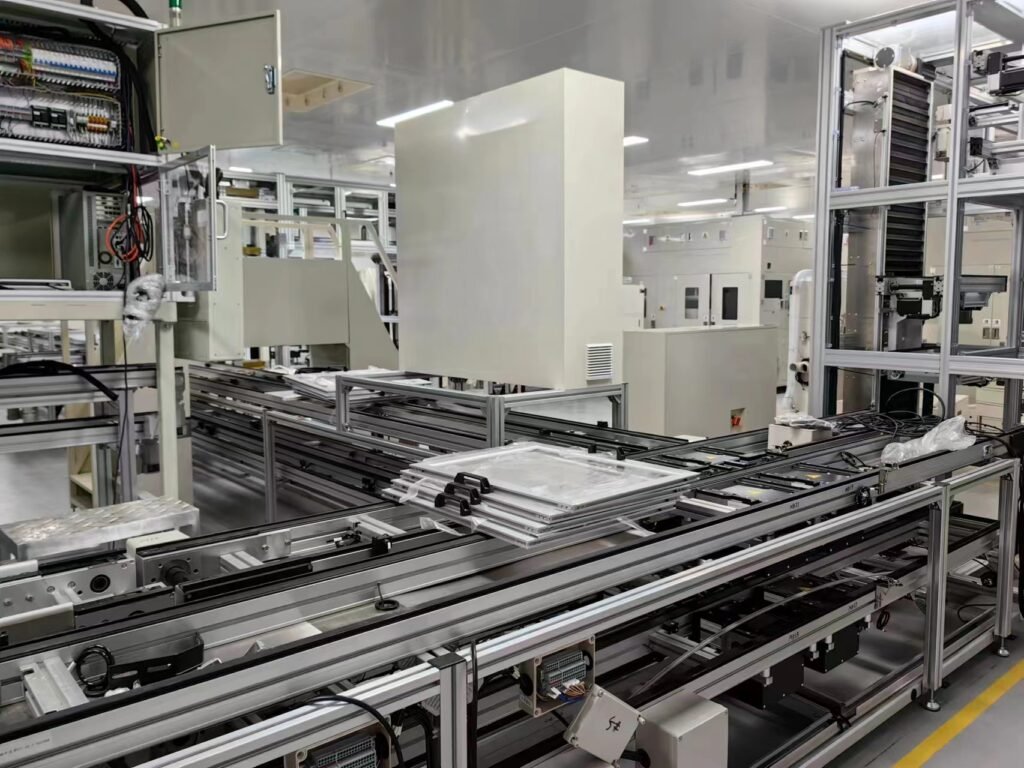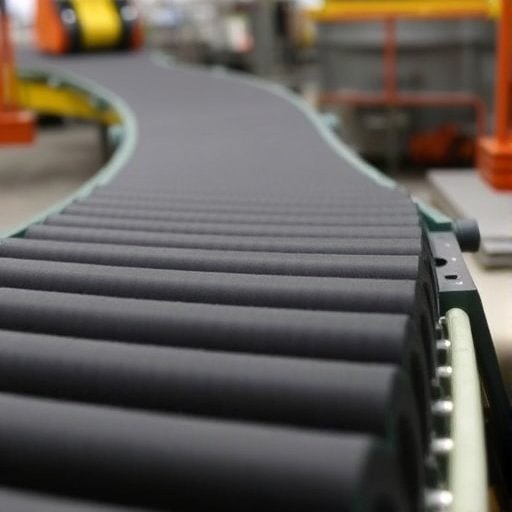In the realm of industrial operations, conveyor systems emerge as indispensable components for optimizing efficiency and boosting productivity. Across manufacturing, warehousing, and distribution sectors, these systems facilitate seamless movement of goods and materials, minimizing labor expenses and guaranteeing swifter, more dependable processes. As technological innovations have progressed over time, a diverse array of conveyor types has been introduced, tailored to address unique requirements across multiple industries.
Focusing on the advanced solutions in the market, this article delves into the variety of conveyors utilized in material handling, with particular emphasis on the offerings of Vitrans, a prominent manufacturer renowned for its expertise in transportadores de paletas y sistemas de transferencia de palés. We will delve into the operational mechanisms of these conveyor types, highlighting their diverse applications and why they are indispensable for a wide range of industrial sectors. Understanding these advancements is crucial for harnessing the full potential of modern conveyor technology.
What is Material Handling and Why is it Important?
Material handling refers to the movement, protection, storage, and control of materials or products throughout the manufacturing, warehousing, distribution, consumption, and disposal stages. It encompasses a variety of manual, semi-automated, and automated systems designed to transport goods efficiently.
The importance of material handling systems cannot be overstated:
- Mayor eficiencia: Automation of material movement reduces manual labor, speeds up processes, and improves overall operational efficiency.
- Seguridad: Conveyor systems can help prevent workplace injuries by reducing the need for workers to carry heavy loads or manually move goods.
- Cost-Effectiveness: Conveyor systems streamline workflows, reduce operational downtime, and ultimately lower operational costs.
- Flexibilidad: Different types of conveyors are available to suit various material handling needs, from light items to heavy pallets.
Types of Conveyors in Material Handling
Conveyors come in a variety of types, each offering distinct advantages depending on the application. Below are the most commonly used types in material handling systems:
1. Aerial (Vertical) Conveyor Systems

Aerial or vertical conveyor systems are used to move materials between different levels in a vertical direction. These conveyors are highly efficient for moving bulk goods or packages in manufacturing and warehouse environments with limited floor space. Aerial conveyors can be either continuous or intermittent, depending on the material handling requirements.
Características principales:
- Ahorro de espacio: These conveyors utilize vertical space, helping save valuable floor space.
- Heavy-Duty: Designed to handle large volumes of materials or heavy loads, they are ideal for high-volume operations.
- Flexible Configuration: Can be configured in a variety of layouts, including single, double, or multiple vertical segments.
Aplicaciones:
- Vertical conveyors are widely used in manufacturing, distribution, and logistics operations, where the need to move materials vertically from one floor to another is common. For example, in warehouses, aerial conveyors can be used to transport pallets from the ground level to mezzanine levels.
2. Horizontal Circulate Conveyor Systems

Horizontal circulate conveyor systems are used to transport goods over a flat or slightly inclined surface, usually in a horizontal direction. These systems are often designed to be modular, allowing for easy integration into existing production lines. Horizontal conveyors are typically used for assembly lines, packaging lines, and product accumulation.
Características principales:
- Versatile: Can be used in a variety of industries, from food processing to automotive manufacturing.
- Modular Design: Many horizontal conveyors are designed to be customizable to fit specific production or warehouse environments.
- High-Speed Transport: Capable of moving large quantities of products in a short amount of time.
Aplicaciones:
- Horizontal circulate conveyors are ideal for transporting items in large quantities, such as boxes, bags, and heavy machinery. They are commonly used in manufacturing facilities for assembly, packaging, and testing operations.
3. Multi-Level Conveyor Systems

Sistemas de transporte multinivel combine the functions of both vertical and horizontal conveyors to facilitate material transport across multiple levels. These systems are ideal for industries where goods need to be moved not only horizontally but also between different floors or elevations within a facility.
Características principales:
- Multi-Level Movement: These systems offer the ability to move materials in both horizontal and vertical directions, making them highly versatile.
- Uso eficiente del espacio: By combining vertical and horizontal transport, multi-level systems can maximize the use of floor and overhead space.
- Flexible Layout: Multi-level systems can be customized based on the layout of the facility, including integration with mezzanine floors or multiple production lines.
Aplicaciones:
- Multi-level conveyor systems are ideal for large-scale warehouses, distribution centers, or manufacturing facilities that require the movement of goods between different levels. For example, in e-commerce fulfillment centers, multi-level conveyors are used to transport packages from sorting areas to shipping zones.
4. Side-by-Side Conveying Systems

Side-by-side conveyors are designed to transport materials on parallel paths. This system is often used when multiple products or items need to be transported simultaneously or in close proximity to one another. The configuration allows products to move along two or more conveyors in parallel, often with separate lanes for different items.
Características principales:
- Parallel Pathways: Multiple materials or products can be transported at the same time, improving efficiency.
- Increased Capacity: Ideal for high-throughput operations that need to handle large quantities of materials.
- Personalización: Can be customized to fit specific product types or production line needs.
Aplicaciones:
- These systems are commonly used in assembly lines, packaging facilities, and warehouses where different types of products or materials are being processed simultaneously. Side-by-side conveyors are particularly useful in environments that require simultaneous handling of multiple items.
Key Benefits of Conveyor Systems in Material Handling
Conveyor systems offer numerous benefits, especially in industries that require the transportation of materials across various stages of production or assembly. Some of the key benefits include:
- Mayor eficiencia: Conveyor systems significantly reduce the time and labor needed to move materials manually, improving throughput and reducing human error.
- Reduced Labor Costs: With automated conveyors, companies can reduce reliance on manual labor, leading to significant cost savings.
- Improved Safety: Conveyor systems help reduce the risk of workplace injuries, such as strains or falls, that often occur when manually handling heavy or bulky items.
- Better Organization: Conveyors help streamline workflows and improve the organization of materials, reducing clutter and increasing overall space utilization.
- Flexible Integration: Conveyors can be integrated with other automated systems, such as robotic arms and sorting machines, to create more efficient production lines.
How to Choose the Right Conveyor System
When selecting a conveyor system for material handling, there are several factors to consider to ensure it meets your needs effectively. Here are some tips:
- Tipo de material: Consider the type of materials you’ll be handling. For example, if you are moving heavy pallets, a pallet conveyor system would be ideal.
- Space Constraints: If you have limited space, vertical conveyors or multi-level systems may be more suitable.
- Capacidad de carga: Ensure that the conveyor system can handle the weight of the materials you intend to move.
- Speed and Throughput: Depending on the volume of materials you need to move, ensure the system offers the right speed and throughput to match your operational requirements.
- Personalización: Look for a system that can be customized or extended to fit your current and future needs.
FAQ
- What industries benefit the most from conveyor systems? Conveyor systems are used across a variety of industries, including automotive manufacturing, food processing, pharmaceuticals, and logistics. They are particularly useful in any industry where materials need to be moved efficiently and safely.
- How do I know which conveyor system is right for my business? To choose the right conveyor system, you need to assess factors like the type of material being moved, the space available, the load capacity required, and the speed at which you need to transport materials. Consulting with a professional manufacturer like Vitrans can help guide you in selecting the best solution.
- Are conveyor systems difficult to install and maintain? Conveyor systems are generally easy to install, especially modular designs, which can be customized to fit your space. Regular maintenance, including cleaning and checking for wear and tear, is essential for optimal performance. Most reputable manufacturers provide detailed installation guides and ongoing support.
Conclusión
Conveyor systems are an integral part of material handling in industrial environments. The different types of conveyors, such as aerial, horizontal circulate, multi-level, and side-by-side systems, offer a variety of solutions depending on the space, materials, and throughput requirements of your operation. By selecting the right conveyor system, businesses can significantly improve efficiency, reduce costs, and enhance safety.
Vitrans provides a wide range of high-quality conveyor systems, from pallet conveyors to advanced multi-level systems, making them a trusted partner for businesses around the world looking to streamline their material handling processes. With over 10 years of experience and a rich supply chain, Vitrans is committed to offering durable, cost-effective solutions tailored to your specific needs.




